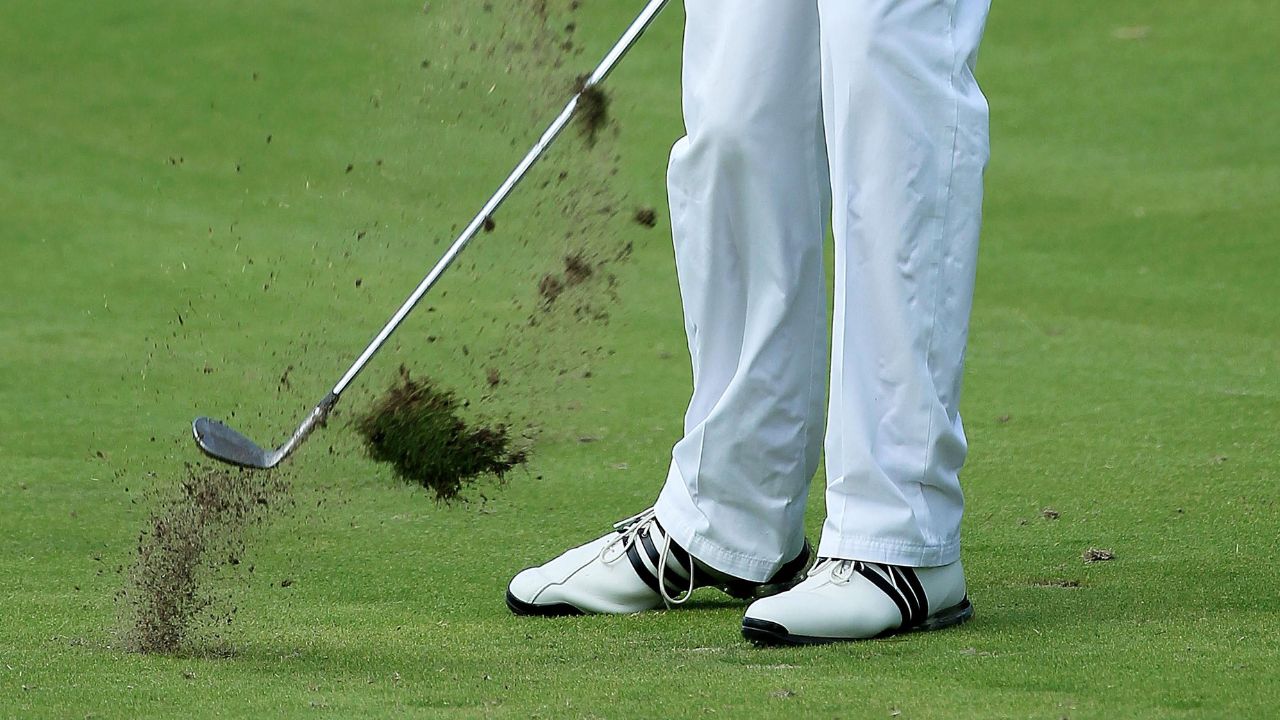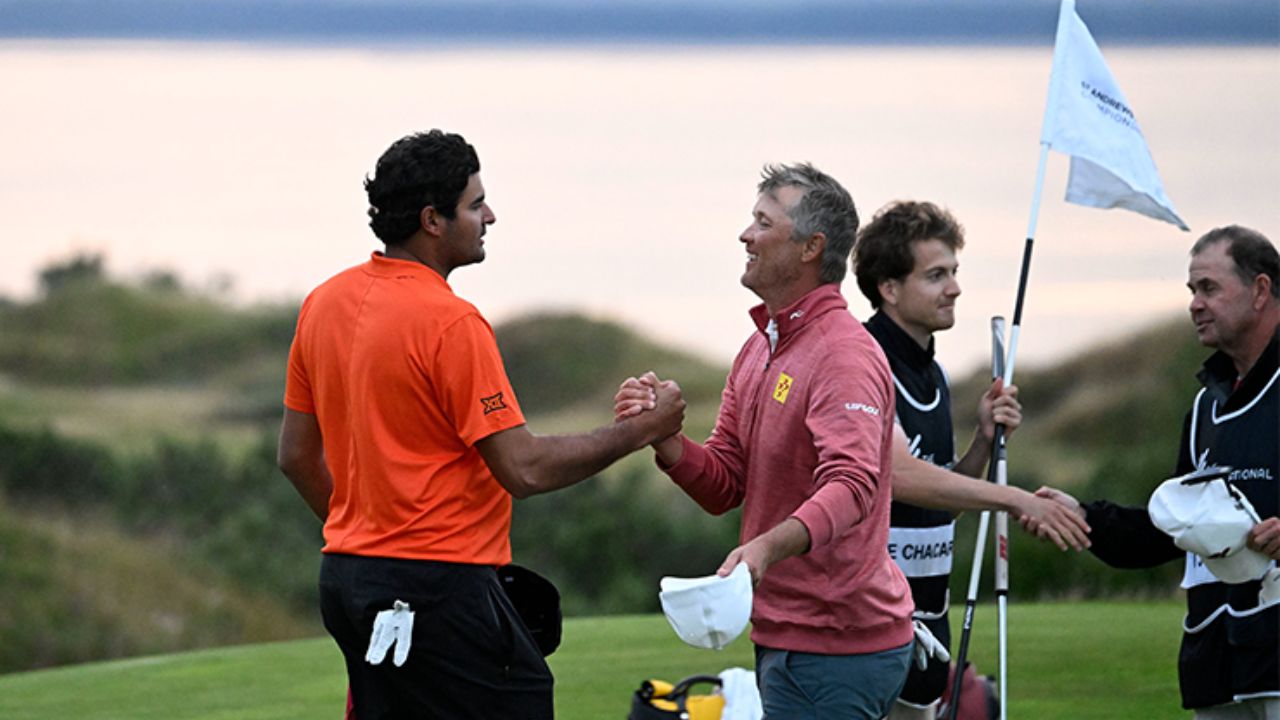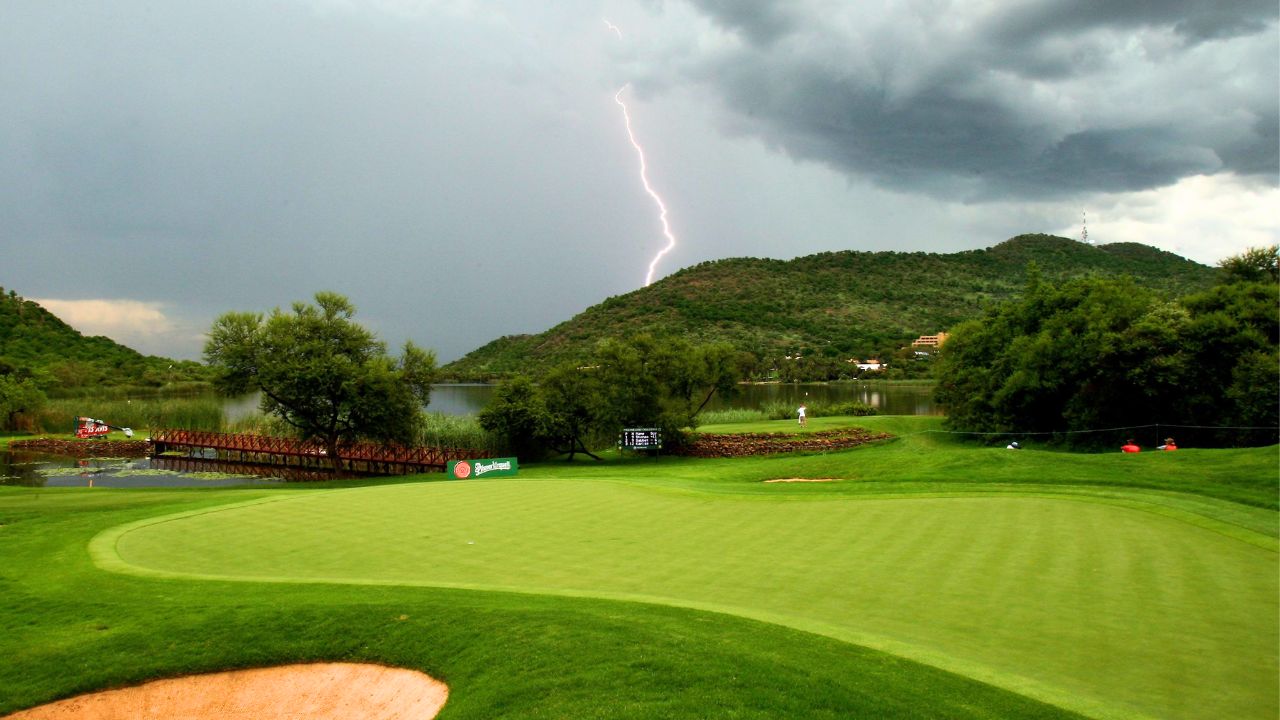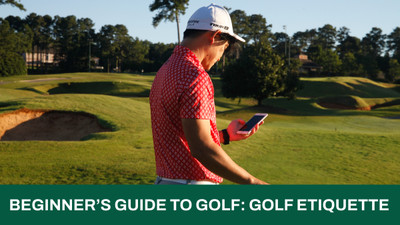GOLFING ETIQUETTE
Posted by GolfBox on 1st Jun 2017
So, you’ve taken up golf and are feverishly working on getting your swing on plane, transferring your weight and keeping your head down. But do you know where to stand, when to keep quiet and how to rake a bunker when you step onto the course?
Golfing etiquette can be confusing for first-timers but by following these guidelines you'll conduct yourself like you've been playing for a lifetime.

BE PREPARED
Get to the course with plenty of spare time to warm up, have a putt on the practice green and get a feel for the conditions. If you’re in a mad scramble to get to the first tee on time, chances are you’ll be in a mad scramble trying to find your opening drive when it disappears into the scrub.
LOOK THE PART
Even if you struggle to play the game, you can at least look like a golfer by dressing to impress. While it doesn’t mean sliding on the white pants and tight-fitting polos preferred by pros, leave the T-shirt and boardies for the beach. Wearing tailored pants or shorts with a belt, a tucked-in polo and golf shoes will go a long way to selling the myth that you can actually play the game. That is, until you shank your first tee shot into the pro shop.
MOBILE MANNERS
If you’re playing a casual round with friends, an on-course phone call will probably be acceptable as long as it doesn’t affect the speed of play. But make sure it is about something vaguely important – an incessant monologue about last night’s game or spouting meaningless drivel about where to have dinner clearly crosses the line. And keep the volume down because the group three fairways across doesn’t need to know about last week’s bout of gastro.
In a tournament, switch your phone to silent or turn it off. And, out of courtesy to your playing partners, don’t check it religiously, unless you’re a surgeon on call or you're using it as a GPS device.

BEFORE YOU TEE OFF
Make sure to grab a scorecard and pre-fill as much of it as you can.
Invest in some good balls - time to turf the Pinnacles, Top Flites and Hot Dots into the practice bag - and mark a few of them with some artistic flair so they're easy to identify.
FIRST-TEE FORMALITIES
Introduce yourself and shake hands with your playing partners. A toss of the coin decides who has the honour, that is, who tees off first.
Now’s also the time to discuss any wagering that will occur during the match, or the moment to opt out if you’re not a punter.
Make sure you have the cash to square up after the game; when you’re down $20 and only have a couple of gold coins in your pocket, it’s a sure recipe for some awkward post-game negotiating.
ORDER OF PLAY
For the rest of the round, the player furthest from the hole takes their shot.
Cut the chat when your playing partners are about to pull the trigger and be ready to play when it’s your turn. No Sergio circa-2002 pre shot routines please: choose your club, limit the practice swings to one or two and fire away.
The winner of the hole has the honour off the next tee; if it's halved, the honour stays with the player who held it on the previous hole.

KEEP UP AND AVOID SLOW PLAY
As enjoyable as it is inhaling the fresh air and making some putts during the round, the fun disappears faster than a 36-handicapper’s carton of balls at a water carry when the pace is snail-like.
Playing 18 holes in under four hours should be the target once your group has teed off; any longer than that and it’ll be eating into precious time allotted to the all-important 19th hole.
Playing at a consistent pace is everyone’s responsibility and the number one rule is to keep up with the group in front of yours.
On tees, speed up play by letting the shorter hitters play first if the group in front are still in range (as long as everyone is OK with changing the order) and play a provisional if you think your first ball is going to be hard to find.
In the fairway, be ready and let faster groups play through. If you’re looking for lost balls, search for a maximum of three minutes before declaring it lost. In non-stroke competitions, pick up your ball if you’ve run out of shots.
On the green, leave your bag/cart at the nearest exit to clear the green quickly and mark your scorecard on the next tee rather than on the green.
By being aware and playing ready golf you should be able to lift the pace and increase everyone’s enjoyment of the game.
And importantly, you won’t become the golfer everyone tacitly refers to as being 'as slow as a wet week'. It’s not a title to be proud of.
LOOK AFTER THE COURSE
It’s said that it’s better to be a mediocre golfer who is lucky than a good golfer without luck. However, when any golfer’s ball is stuck in a crater-like footprint left behind by some uncaring ignoramus, that’s not unlucky; that’s just unfair.
The simple rule is to leave the bunkers how you would like to find them. Level out the sand, smooth it over and put the rake back.
The same goes in the fairway: fill your divots with sand. As unlucky as it is playing from a sanded divot in the fairway, it’s very hard to swallow when the divot hasn’t been repaired.
And on the greens, repair your pitchmarks by pushing the edges into the centre and tapping it flat with your putter to help the turf grow back quickly and evenly.

KNOW THE RULES
Golf is a unique game in that it requires the participants to administer the rules of the game by themselves.
Honesty and integrity are the foundation of the game and beefing up your knowledge of the rules is good etiquette to resolve any tricky on-course situations.
And if you’re not 100 per cent sure about a ruling, feel free to ask your playing partners or marker for advice.
DRIVE CARTS ON CART PATHS
Stick to the designated paths if driving a golf cart and never drive it over tees and greens. Make sure you leave the cart in a spot that both occupants can easily reach after playing your shots. And no, those narrow fingers of turf between the bunkers aren’t there to showcase your precision driving skills. Drive considerately and responsibly.
APPLAUD GOOD GOLF
Let your playing partners know when they’ve hit a good shot or sunk a nice putt. A simple “good shot” will do wonders for group morale.
And if someone hits a bad shot please don’t coach unless: a) you’ve been asked for your opinion and b) you play off a handicap of less than three.

STAND IN THE RIGHT PLACES
Beginners often find it difficult to know the right place to stand when other players are about to unload.
As a general rule, stand in a spot that won’t interfere with a player’s sightline when on the tee (i.e. not directly behind or too close to their field of vision) and never stand ahead of a person playing from the fairway.
Once you reach the green, be attentive to where your fellow player’s putting lines are. Even with soft spikes on, don’t stamp over their putting lines to the cup and be mindful of your shadow so it doesn’t intersect a putting line or the hole.
PIN PROTOCOL
When the putters come out of the bag, scan the length of putts each player has left. If yours is the shortest, i.e. you’ll be the last to play, ask your fellow players if they the pin left in, taken out or tended (and if it’s windy grab the flag to stop it flapping). If all the players in your group want the pin taken out, lay it on the ground out of the way.
If you’re the first to putt out, go and grab the pin and be ready to put it back in when your group has putted out.
SAFETY FIRST
If there is even a slight chance you might reach the group ahead of the tee, it’s always better to wait.
Don’t launch it over their heads and then endure the walk of shame uttering the lame excuse of ‘I’ve never hit it that far’ or ‘sorry, it came straight out of the screws’.
If a shot is heading in the direction of another golfer always yell out 'fore' to warn them of the impending danger to their safety.
When there’s lightning around, beat a hasty retreat to the clubhouse immediately. Stainless steel is a great conductor of electricity so let the storm pass in safety and resume battle when it’s clear. Or if it sets in, don’t worry, there’ll always be another day.

DON'T SANDBAG
The practice of protecting your handicap by throwing out the anchor, or pulling up, when you’ve got a good round in the making is a no-no. Good golfing etiquette is to try as hard as you can to play to your potential and three-putting the final four greens is fooling no-one.
Don’t be the bandit who sandbags for months before unleashing a net 61 in the club championship - it’s just poor form.
AFTER THE GAME
No matter if you’ve had a shocker or a blinder, when the final putt drops it’s time to shake hands with your playing partners, sign your scorecard and head to the clubhouse.
It’s good etiquette to buy the first round of refreshments and never up and leave when it’s your turn to buy. If you have to shoot through, make sure any drinks and bets have been squared away.
THE FINAL WORD ON GOLFING ETIQUETTE
Don’t be afraid to ask if you’re unsure of any aspect of etiquette. Most golfers are only too happy to help you out.
Golfing etiquette is all about respect: for the game, your playing partners, the course and yourself.


